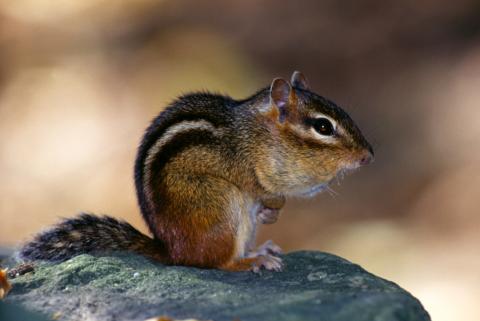The chipmunk (Tamias striatus) is a small, ground-dwelling rodent that occurs throughout Missouri but is most common in the Ozarks. Their habit of digging for food and to excavate burrows can lead to conflicts with property owners.

The Wildlife Code of Missouri specifies that you may shoot or trap damage-causing chipmunks to prevent further damage. Refer to 3 CSR 10-4.130 Owner May Protect Property; Public Safety of the Code for details and restrictions.
Title
Exclusion
Chipmunks occasionally enter homes. Prevent entry by closing holes in foundation walls and by screening windows, vents, and other ground-level openings.
Title
Habitat Modification
Homes with wooded lots, ornamental shrubbery, and dry rock walls are attractive to chipmunks. These habitats can be made less attractive by altering the pattern of natural and ornamental plantings. However, most people value their trees and shrubs too highly for drastic modification and may opt to tolerate the chipmunks as a part of the natural community.
Title
Fumigants & Repellents
These are not recommended because none are known to be effective. Mothballs, in particular, are not only ineffective, they contain toxic naphthalene, and the vapor is harmful to humans.
Title
Trapping
Cage-type traps are effective. Rat-sized snap traps are also effective but are indiscriminate and may kill non-target species. Effective baits include peanut butter with dry, rolled oats and various nuts and seeds mixed in. Place either type of trap in areas where chipmunks travel or feed.
Title
Shooting
Where use of guns and firearms is allowed, chipmunks can be shot with a BB or pellet gun or with a conventional firearm, usually a rimfire. Check with local authorities regarding use of guns and firearms.
Note: Even though chipmunk numbers can be reduced by shooting or trapping, new animals may move into vacated habitats. Consequently, chipmunks can seldom be eliminated entirely unless habitats are modified.





















